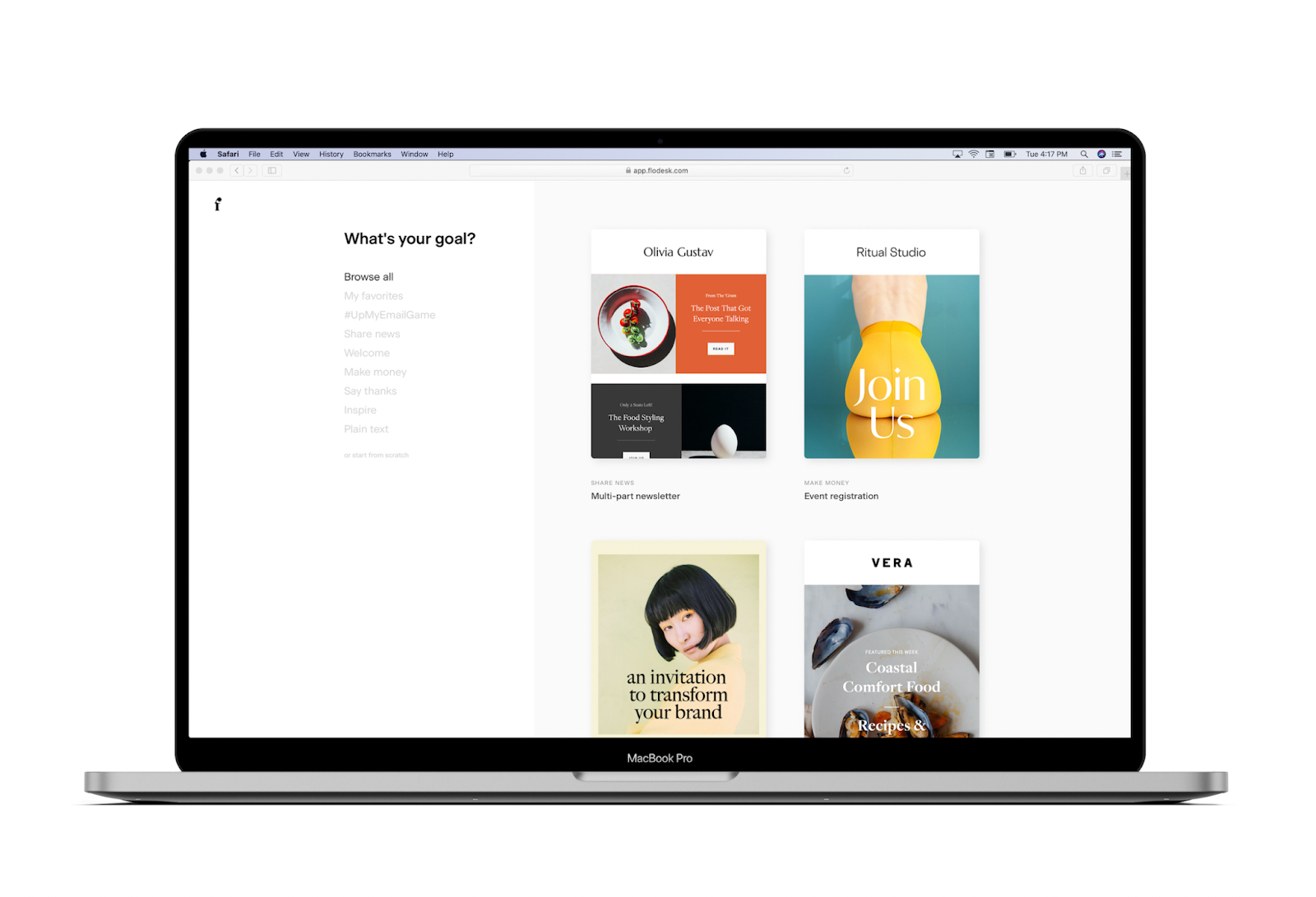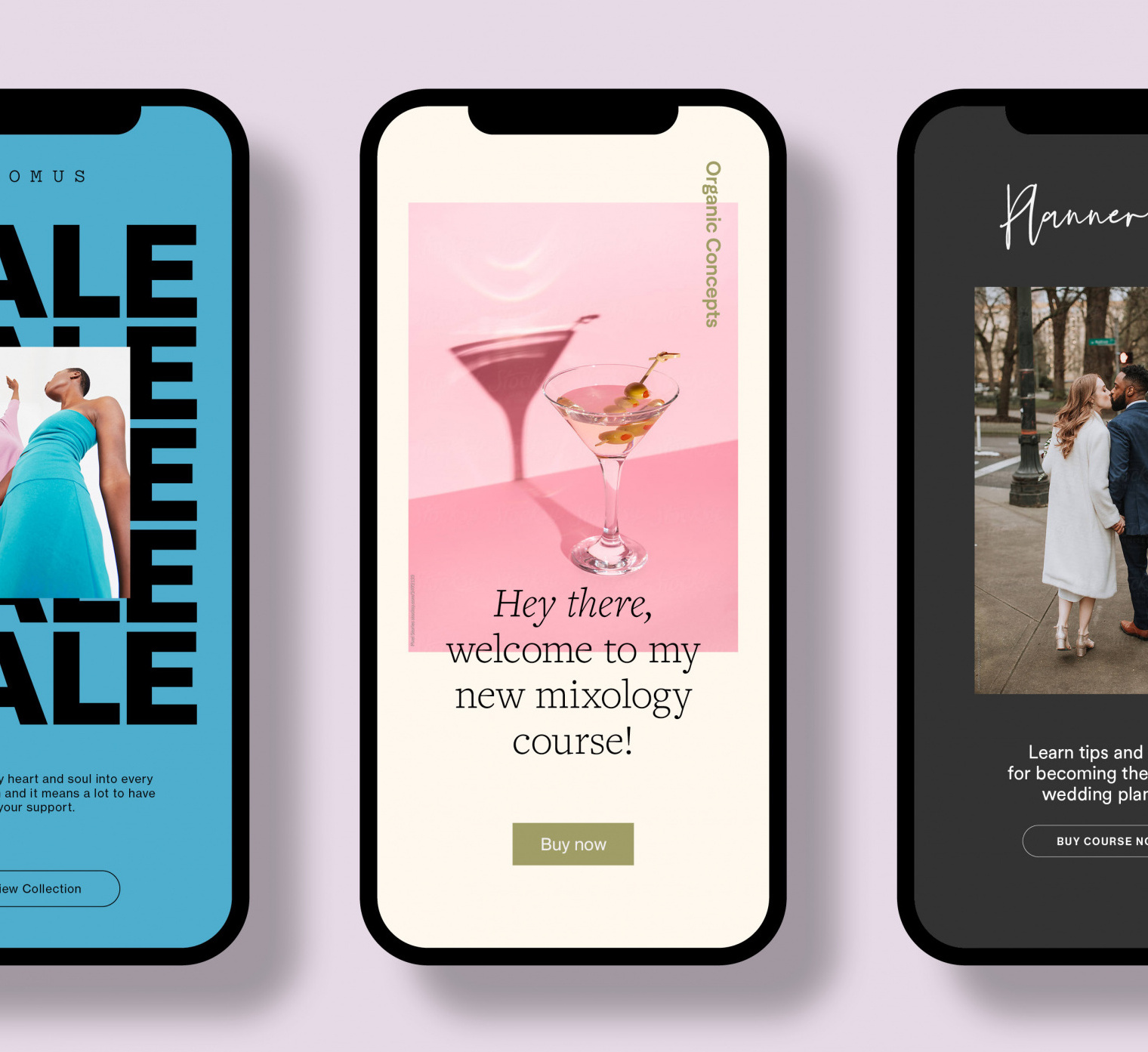What is a digital product and is it worth creating?
Table of Contents Jump to:
Jump to:
Table of contents
TL;DR: We’ve broken down what exactly a digital product is, what product types exist, and the who and why of creating and selling them!
Digital product is one of those terms that gets thrown around a lot, but many people don’t understand what it actually means.
This article will break down some of the mystery surrounding digital products. Soon, you’ll realize they’re much more straightforward than you think… and you probably come into contact with them regularly.
Read on to learn more about digital products and how they compare to physical ones and digital services. We’ll also outline four common types of digital products and provide some inspo if you want to create your own, so let’s begin.
Get unlimited email sends & subscribers with Flodesk
We’ll never increase pricing because your email list is growing
So, what is a digital product?
A digital product is one that exists in a digital format rather than a physical format. Digital products can be free or paid, but most importantly, they should be helpful and provide value to the person who’s accessing them.
To showcase just how diverse digital products can be, consider the following examples:
- The Netflix app on your phone
- A recipe book you paid for and downloaded
- A monetized email newsletter
- An online workout membership complete with guided videos and ebooks
- Wikipedia
Read next: Need help coming up with a digital product idea for your niche? We’ve got your back.
4 types of digital products
So many things fall under the umbrella of digital products. Let’s check out some of the most popular categories first. This will help you understand what digital products look like, ideate some digital products, and maybe even think about how your business could sell digital products.
Educational
Simply put, an educational digital product teaches you something. Businesses put them together to share their knowledge and valuable information with their customers and communities. People download or purchase them to learn more about their content.
For example, this Flodesk form asks leads to opt-in to an email list to receive the educational download: “My Top 5 Secrets To Social Media—Revealed!” As a result, the reader will learn how to level up their social media skills.
Here are a few more examples of educational digital products:
- Guides on building the perfect ecommerce marketing strategy
- Online courses
- Podcasts, virtual lectures, or webinars
Templates
Templates are popular digital products because they’re easy to create and share. They also lend themselves to different industries like design, marketing, coaching, and event planning because they take many forms. After all, the word “template” simply means a guide or sample that helps someone build something for themselves.
Let’s look at some of Flodesk’s email newsletter templates below. They act as starting points for email marketers who want to create their own emails quickly and efficiently (without sacrificing a great finished result).
And here are some other kinds of templates you might see circulating the web as digital products:
- Social media or website graphics
- Calendars, organizers, or planners
- Posters, fliers, or invitations
- Banners or header images
- Surveys or quizzes
- Documents like CVs, project proposals, or business plans
Get unlimited email sends & subscribers with Flodesk
We’ll never increase pricing because your email list is growing
Online memberships
In the context of a digital product, a membership usually means you sign up for some online group to access resources and information that’s valuable to you.
Let’s check out a few common examples of online membership sites:
- Hobby or interest-based memberships (for example, travel groups, knitting groups, or book clubs)
- Fitness-related memberships (like hiking, yoga, or other specialized sports groups)
- Professional memberships (such as groups that provide professional development opportunities, like resources for teachers or content creators)
While memberships often encompass digital tools, they sometimes also involve digital services. In all the above examples, members probably receive digital products like video content and online tutorials, but also potentially get access to digital services like coaching or mentorship sessions.
Digital tools
While digital tools are one of the more difficult digital products for the average person to create, they’re still worth a mention here. And if you gain the right technical expertise (or know someone who already has it), you might be able to build one for yourself.
Digital tool is an umbrella term that refers to platforms, web apps, mobile apps, software, and websites that make it easier for people to do specific tasks or carry out certain actions. You could use the word digital tool to refer to anything from the photo and video editing app VSCO to the survey platform Typeform.
Digital products vs. physical products
The main difference between a digital and physical product is that the former exists in a digital format and the latter in a physical one. You can touch a physical product, but you can’t touch a digital product (unless you’re touching your computer screen, and we don’t want that).
For example, a book is a physical product, whereas an ebook or online guide is a digital product.
It’s worth noting that digital products can often transform into physical products, and vice versa. Let’s say an influencer who released a popular cookbook online as a digital product. They might later decide to publish hard copies of the same cookbook and finally sell physical products.
While some traditionalists prefer physical products to digital ones, selling digital products has a few key advantages.
- They’re extremely easy to produce more (or less) of
- They’re ideal to sell online
- They usually cost very little money to create or replicate
- They’re easy to store
- You usually don’t need any special skills, materials, or resources to create them
You can send them to your customers right away (and even set up automated workflows to do so for you)
Digital products vs. digital services
Although there’s some overlap between digital products and services, they aren’t exactly the same. The easiest way to understand the difference is by taking the word ‘digital’ out of the picture. Think of the difference between products and services in general:
- Products are things (whether physical or digital) we can interact with. We can look at them, download them, navigate them, and share them.
- Services are actions that people perform for us or deliver to us. They usually consist of exchanging information.
That’s right—this is where things get confusing. People who provide digital services sometimes also provide digital products. Here are a few examples of how that can look for content creators:
- A health coach might provide health coaching services consisting of one-on-one client sessions but also deliver digital products like recipe books, health journey planners, or workout regimens.
- A photographer might offer services like photoshoots or in-person photography classes but also deliver digital products like online photography class materials or customized presets.
- A business consultant might provide services like group or individual business coaching or workshops, but also deliver digital products like online guides to start your own business.
Can anyone create digital products?
If you’ve ever browsed the internet on your phone or computer, you’ve come into contact with digital products—you probably just didn’t know the official term for them yet. And that’s what’s so exciting about digital products: they come in all shapes and sizes, and anyone can create them.
Digital products are flexible tools that entrepreneurs and online businesses can use to help with their marketing efforts, enrich branding, expand their network, provide customers with valuable resources, and ultimately reach new levels of success all around.
So what are you waiting for? Whether you’re an author who wants to make your novel into an audiobook or a blogger who wants to share downloadable freebies with your email subscribers, get started on your next digital product right away.




